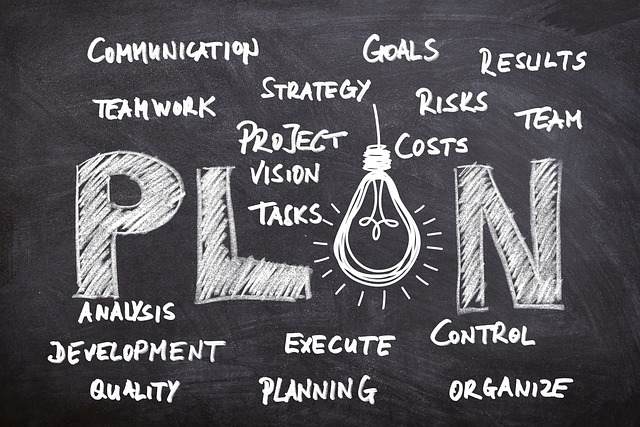The Role of Strategic Foresight in Business Planning
In an ever-changing business landscape, companies must navigate uncertainties and rapidly shifting consumer expectations. Strikingly, strategic foresight emerges as a vital tool in this navigation process. By anticipating potential futures, businesses can craft adaptive long-term strategies that position them for success. Strategic foresight isn’t merely about predicting the future; it encompasses a holistic understanding of trends, variables, and potential outcomes. Let’s delve deeper into each aspect of strategic foresight and how it intertwines with effective business planning.
Understanding Strategic Foresight
The essence of strategic foresight lies in recognizing that the future is not predetermined. Instead of focusing solely on what is likely to happen, foresight encourages businesses to explore multiple scenarios. This exploration is critical; it enables organizations to identify both opportunities and challenges that may materialize over time. Imagine you are standing at a crossroads, with several paths ahead. Each path leads to a different future shaped by varying trends, innovations, and risks. Which one should a business take? This is where strategic foresight proves invaluable.
Moreover, businesses often operate in environments filled with ambiguity, complexity, and unpredictability. Strategic foresight incorporates tools and methodologies that help to dissect these elements. Companies can use techniques like scenario planning, trend analysis, and environmental scanning. By rigorously studying potential outcomes and their implications, organizations enhance their capacity to respond proactively. This proactive approach distinguishes successful enterprises from those that merely react to market shifts without adequate preparation.
Aligning Strategic Foresight with Business Planning
Now that we understand what strategic foresight is, let’s examine how it aligns with business planning. To begin with, business planning involves setting objectives, outlining strategies, and forecasting resources. A well-thought-out business plan requires a deep understanding of the external environment. This is where strategic foresight complements business planning. By integrating foresight into the planning process, organizations can base their plans on a spectrum of potential futures rather than static assumptions.
For example, consider a technology company developing software. If the company merely focuses on current market trends, it might miss emerging technologies that could disrupt its business model. However, by employing strategic foresight, the company can analyze factors like artificial intelligence advancements or shifts toward decentralized technologies. They can then incorporate these insights into their planning, allowing the business to stay ahead of the curve and pivot as necessary. The adaptability that comes from strategic foresight leads to more resilient, forward-thinking business plans.
The Benefits of Incorporating Strategic Foresight
The advantages of incorporating strategic foresight into business planning are manifold. First, it enhances decision-making capabilities. Armed with a variety of future scenarios, decision-makers can weigh options with greater insight. They can evaluate which strategy aligns best with the organization’s long-term goals while also considering potential obstacles.
Furthermore, strategic foresight fosters a culture of innovation. When companies prioritize foresight, they encourage their teams to think creatively about the future. This results in a more dynamic approach to product development and market strategies. Instead of merely reacting to customer demands, employees begin to anticipate future needs. As they cultivate this forward-thinking mindset, organizations can improve their competitive edge and establish themselves as industry leaders.
Building a Foresight-Driven Culture
Creating a culture centered around strategic foresight doesn’t happen overnight. It involves a deliberate effort to instill this mindset at all levels of the organization. Start by encouraging collaboration across departments. Each team can contribute its unique insights, leading to a richer understanding of potential futures. Additionally, leadership plays a critical role in modeling foresight behavior. When executives emphasize its importance, employees grasp its value and integrate it into their daily routines.
Training also serves as a crucial piece of this cultural transformation. Workshops and seminars on foresight methodologies can empower employees to think strategically about future possibilities. They can learn how to conduct environmental scans and perform scenario analyses. Building these skills internally ensures that foresight is an ongoing, embedded practice rather than a one-time effort. Over time, this investment in foresight pays dividends, allowing organizations to skillfully adapt to changing landscapes.
Challenges Faced in Implementing Strategic Foresight
<pWhile the benefits of strategic foresight are clear, businesses must also navigate several challenges when implementing it. One primary obstacle is inertia. Organizations can become entrenched in their current ways of thinking and operating. This resistance to change can stifle innovation and limit the development of foresight practices. It’s crucial for leadership to actively combat this inertia by promoting open communication and encouraging a willingness to experiment with new ideas and strategies.
Another challenge is the complexity of accurately forecasting trends. The interplay of various factors makes predicting the future inherently uncertain. Businesses must recognize that while foresight tools provide valuable insights, they cannot deliver absolute certainties. Emphasizing the importance of flexibility in strategy becomes paramount. Companies should remain agile, ready to pivot as new information emerges or as scenarios evolve. Keeping foresight iterative rather than linear encourages continual reflection and adaptation.
Successful Case Studies in Strategic Foresight
Understanding how organizations successfully utilize strategic foresight can provide practical lessons. One notable example is Shell Oil, which effectively utilized foresight techniques in its strategic planning. In the 1970s, Shell applied scenario planning to address uncertainties in oil supply and geopolitical tensions. By envisioning various future scenarios, Shell could anticipate challenges and opportunities. This foresight became integral to their long-term strategy, allowing them to navigate crises effectively and maintain competitive advantage.
Another case involves the technology giant Apple. Apple’s focus on innovation not only stems from product development but also from an understanding of consumer behavior and technology trends. Through extensive research and foresight initiatives, Apple consistently anticipates future customer needs. Their development of the iPhone was born from foresight into mobile technology evolution, which solidified their lead in the market. Such success stories illustrate that strategic foresight can set the foundation for transformative business strategies.
Measuring the Impact of Strategic Foresight
Organizations should not overlook the importance of measuring the impact of their strategic foresight initiatives. By tracking key performance indicators (KPIs), businesses can assess the effectiveness of their foresight practices over time. Metrics might include the number of innovative products launched, the speed of adapting to market changes, or overall customer satisfaction. Quantifying these elements provides tangible evidence of how strategic foresight translates into real value.
Moreover, feedback loops enhance the process. Regularly evaluating foresight initiatives allows organizations to refine their approaches continually. For instance, if a specific scenario analysis did not yield the anticipated outcomes, it prompts a re-examination of the assumptions made. This iterative feedback mechanism increases the robustness of foresight practices and ensures alignment with the evolving business landscape.
Future Trends in Strategic Foresight
Looking ahead, several trends are likely to shape the future of strategic foresight in business planning. First and foremost, the rise of artificial intelligence (AI) and machine learning will play a significant role in predictive analysis. Organizations will harness AI to analyze data and generate insights more rapidly. This capability will allow for faster scenario generation and more informed decision-making — giving businesses a sharper competitive edge.
Additionally, the increasing importance of sustainability will influence foresight practices. Businesses are realizing that long-term success cannot occur without considering environmental and social factors. This shift will drive organizations to incorporate sustainability into their foresight frameworks, helping them understand how future regulations, consumer preferences, and global trends will impact their strategies.
Integrating Stakeholders in Foresight Activities
The role of stakeholders cannot be understated in the context of strategic foresight. Including various stakeholders ensures that multiple perspectives shape the foresight process. This inclusive approach enriches scenario development and leads to a more comprehensive understanding of potential futures. Additionally, engaging stakeholders fosters a sense of ownership and commitment to the foresight initiatives. When stakeholders are involved from the onset, they are more likely to support the resulting strategies, leading to stronger alignment within the organization.
Furthermore, leveraging external partnerships can provide invaluable insights. Collaborating with experts, think tanks, or industry consortia can expand an organization’s knowledge base. Outside perspectives can challenge conventional thinking, provoke new ideas, and uncover blind spots within the organization’s strategic vision. By cultivating an ecosystem of foresight that encompasses both internal and external stakeholders, businesses can enhance their preparedness for future uncertainties.
Conclusion: The Path Ahead for Businesses
Strategic foresight is not merely an addition to business planning; it is an essential pillar that enables organizations to thrive in an uncertain future. By understanding what foresight encompasses and how to integrate it into their operations, companies can position themselves strategically. Recognizing the challenges lies in utilizing foresight effectively will help organizations develop an adaptive mindset, encouraging a culture of innovation. As businesses enhance their foresight practices, they will navigate uncertainties more skillfully, paving the way for sustainable long-term success. Ultimately, embracing strategic foresight can mean the difference between merely surviving in a competitive landscape and thriving as a resilient industry leader.
FAQ
- What exactly is strategic foresight?
- Strategic foresight is a systematic approach used by organizations to anticipate and prepare for potential future scenarios. It involves assessing trends, uncertainties, and varying possibilities to create informed long-term strategies.
- How does strategic foresight benefit business planning?
- Incorporating strategic foresight into business planning allows companies to develop adaptable strategies based on a range of possible futures. This proactive approach enhances decision-making and prepares organizations to respond effectively to uncertainties.
- What are some challenges of implementing strategic foresight?
- Challenges include internal resistance to change, the complexity of accurately forecasting trends, and ensuring that foresight practices are integrated into the organization’s culture. Overcoming these challenges requires commitment and effective leadership.
- Can you provide an example of successful strategic foresight?
- Shell Oil effectively utilized strategic foresight in the 1970s through scenario planning. This practice helped them navigate uncertainty in oil supply and geopolitical issues, ultimately allowing the company to maintain its competitive advantage.
- How can organizations measure the impact of strategic foresight?
- Organizations can measure the impact of strategic foresight by tracking key performance indicators (KPIs), such as the speed of adapting to changes, the rate of innovative product launches, or overall customer satisfaction related to foresight-driven strategies.



